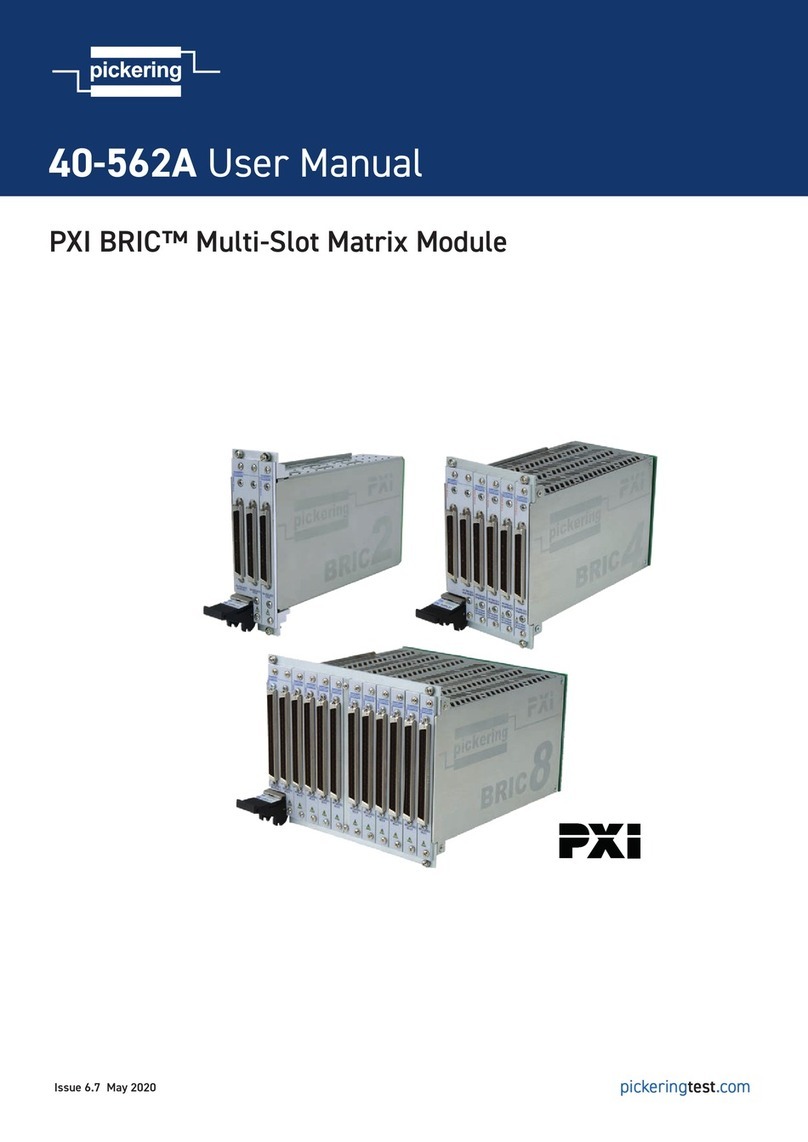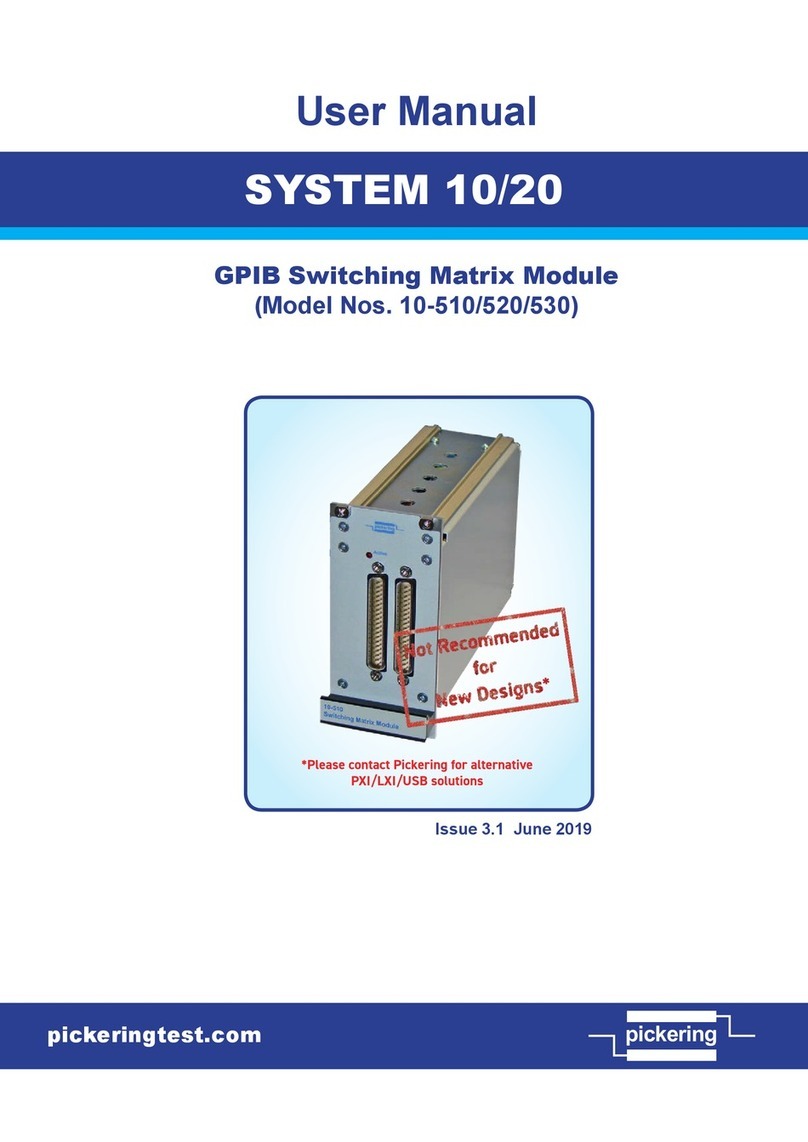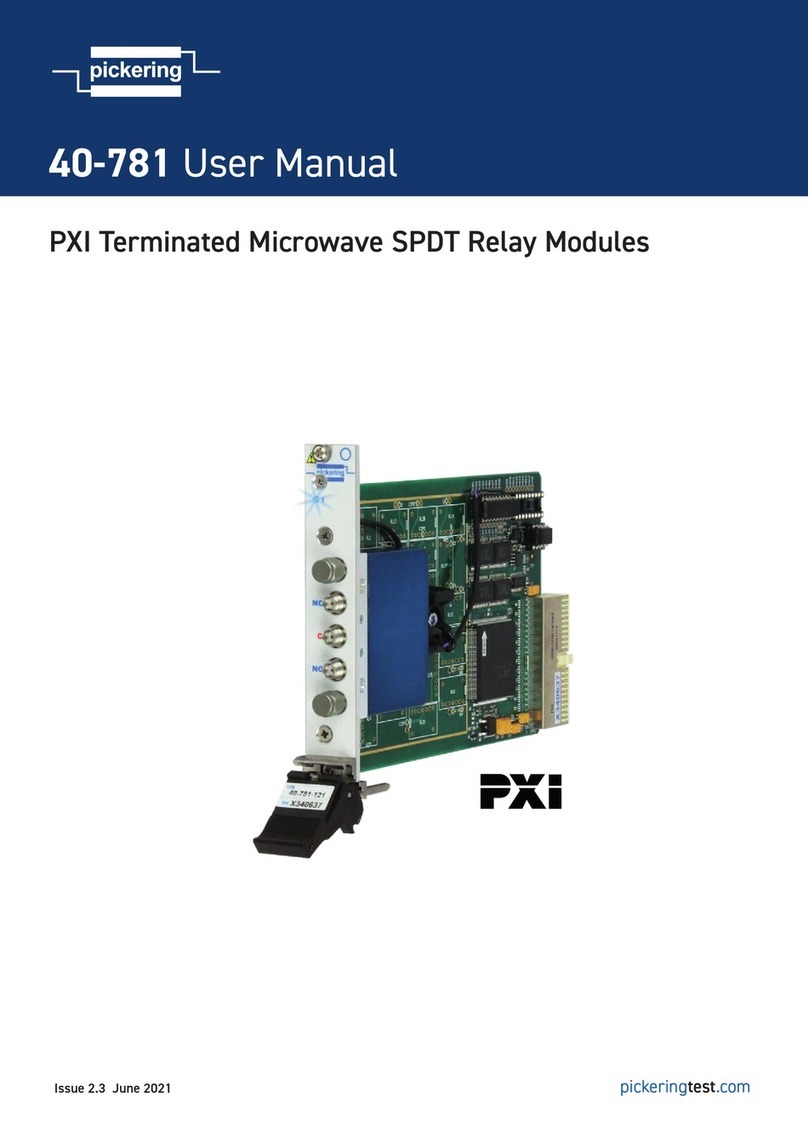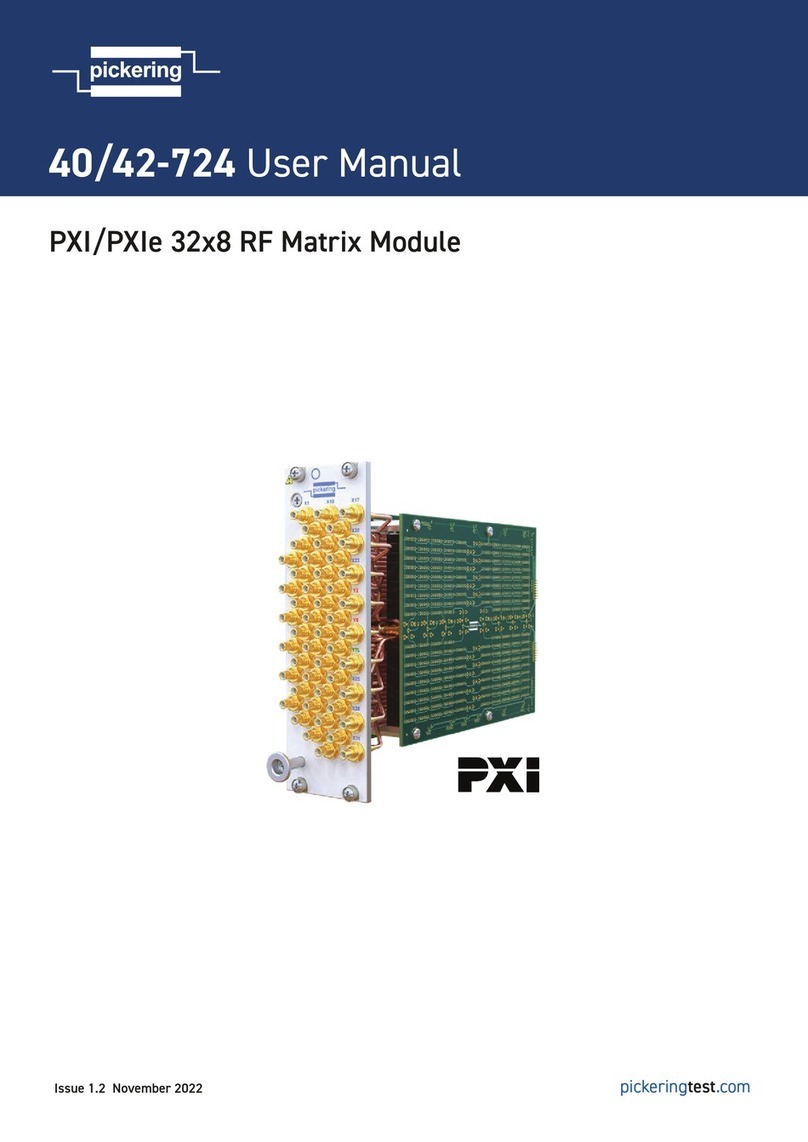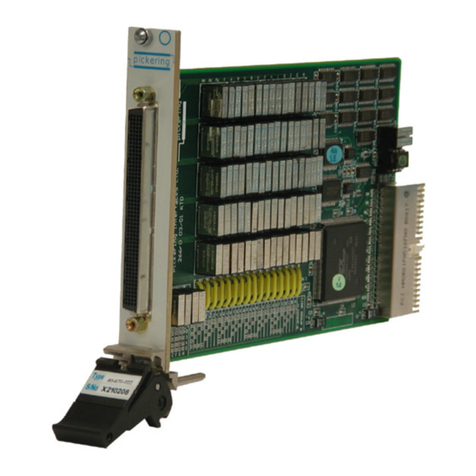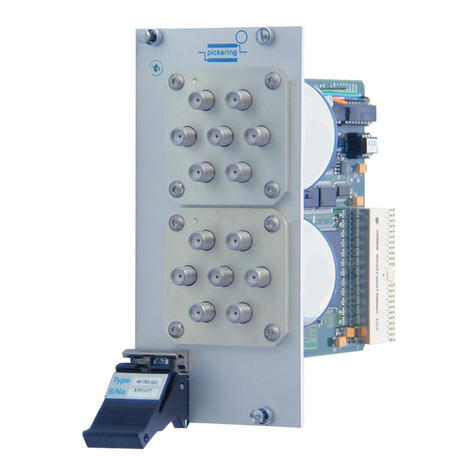
SECTION 1 - TECHNICAL SPECIFICATION
Page 1.3
pickering
PXI/PXIe Analog Output/Current Loop Simulator 41/43-765
Analog Output Module, 41/43-765
pickeringtest.com
Specifications & Ordering Information
Specification
Number of Channels: 16, 12, 8 or 4
Output Current
(each Channel):
4-20 mA, 0-24 mA, +/-24 mA,
0-5 V, +/-12 V or +/-5 V
Resolution: 16 bit – less than 1 uA per 1 LSB
Error (typical*): ±0.1 FSR Total Unadjusted Error
DNL ±1 LSB
Fault Simulation: Open or Short Circuit
Channel Isolation: Full isolation mode in banks of 4
channels (per DAC)
External PSU input: 16.5 VDC to 60 VDC, 500 mA
* The extreme top and bottom ends of ranges may reach
±0.2% of FSR ±Resolution.
Power Requirements - 41-765
+3.3 V +5 V +12 V -12 V
0.25 A 0.55 A 0.8 A 0
Power Requirements - 43-765
+3.3 V +12 V
0.5 A 1 A
Operating/Storage Conditions
Operating Conditions
Operating Temperature:
Humidity:
Altitude:
0 °C to +55 °C
Up to 90 % non-condensing
5000 m
Storage and Transport Conditions
Storage Temperature:
Humidity:
Altitude:
-20 °C to +75 °C
Up to 90 % non-condensing
15000 m
PXI & CompactPCI Compliance - 41-765
The module is compliant with the PXI Specification 2.2.
Local Bus, Trigger Bus & Star Trigger are not implemented.
Uses a 33 MHz 32-bit backplane interface.
PXIe Compliance - 43-765
The module is compliant with the PXIe Specification 1.0.
Local Bus, Trigger Bus & Star Trigger are not implemented.
Mechanical Characteristics
41-765 - Single slot 3 U PXI (CompactPCI card).
43-765 - Single slot 3 U PXIe, compatible with PXIe hybrid
slot.
3D models for all versions in a variety of popular file
formats are available on request.
Connectors
41-765 - PXI bus via 32-bit P1/J1 backplane connector.
43-765 - PXIe bus via XJ3 and XJ4 backplane connectors.
Signals via front panel 78-pin male D-type connector, for
pin outs please refer to the operating manual.
Mating Connectors & Cabling
For other connection accessories for the 41/43-765 please
refer to the 90-006D 78-pin D-type Connector Accessories
data sheet where a complete list and documentation
can be found for accessories, or refer to the Connection
Solutions catalog.
Product Order Codes
PXI Analog Output / Current Loop Simulator Module
16 Channel
12 Channel
8 Channel
4 Channel
41-765-001
41-765-002
41-765-003
41-765-004
PXIe Analog Output / Current Loop Simulator Module
16 Channel
12 Channel
8 Channel
4 Channel
43-765-001
43-765-002
43-765-003
43-765-004
Product Customization
Pickering modules are designed and manufactured on our
own flexible manufacturing lines, giving complete product
control and enabling simple customization to meet very
specific requirements.
All customized products are given a unique part number,
fully documented and may be ordered at any time in the
future. Please contact your local sales office to discuss.
Note: If acceptance of the HART signaling is required
please contact the sales office.
Safety & CE Compliance
All modules are fully CE compliant and meet applicable
EU directives: Low-voltage safety EN61010-1:2010,
EMC Immunity EN61326-1:2013,
Emissions EN55011:2009+A1:2010.
43-765 Module
in PXIe Format
